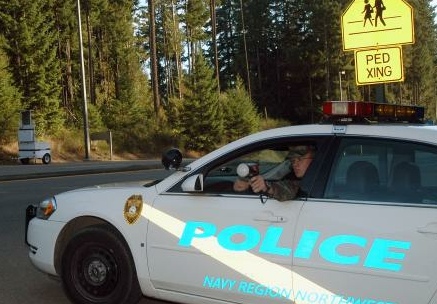

A Radar Gun that Catches Driver Texting Is in Development
ComSonics, a Virginia-
 American drivers could soon enough face yet another restriction while they’re cruising the streets, as a new device is being developed as we speak. According to Malcolm McIntyre of ComicSonics, the technology of the new radar is similar to what cable repairmen use to find where a cable is damaged, from a rodent, for instance. They basically look for frequencies leaking in a transmission, McIntyre said.
American drivers could soon enough face yet another restriction while they’re cruising the streets, as a new device is being developed as we speak. According to Malcolm McIntyre of ComicSonics, the technology of the new radar is similar to what cable repairmen use to find where a cable is damaged, from a rodent, for instance. They basically look for frequencies leaking in a transmission, McIntyre said.
According to the source, a text message emits different frequencies to phone call and data transfer, that can be distinguished by the device the tech company is working at. Even though texting while driving is not illegal in all of U.S., it would prove particularly useful for law enforcement in states such as Virginia, where it’s banned.
ComSonics is a tech company based in Harrisonburg, Virginia, that started in the cable TV industry and provides calibration services for speed enforcement equipment. McIntyre discussed the company’s move into texting detection Monday, at the second annual Virginia Distracted Driving Summit. The only problem is whether engineers will find a way to identify who's phone was being used or they just going to stop cars with just one driver.
As you might’ve observed already, texting while driving has come to be considered dangerous by many people, including authorities, and in some place has either been outlawed or restricted.
In fact, a survey of more than 90 teens from more than 26 high schools nationwide conducted nationwide by Liberty Mutual Insurance Group in 2006 showed that 37% of students consider texting to be either “very” or “extremely” distracting. A American Automobile Association study showed that 47% of teens admitted to being distracted behind the wheel because of texting, this is alarming because 40% of all American teens say they have been in a car when the driver used a cell phone in a way that put people in danger.
Texting while driving has been outlawed for all drivers in the following states: Arkansas, California, Colorado, Connecticut, Delaware, District of Columbia, Florida, Georgia, Illinois, Indiana, Iowa, Louisiana, Maryland, Massachusetts, North Dakota, Michigan, Minnesota, Nevada. New Hampshire, New Jersey, New York, North Carolina, Oregon, Pennsylvania, South Carolina, Tennessee, Utah, Vermont, Virginia, Washington, Wisconsin, and Wyoming.
Just so you know...
Update: We've reached out to ComicSonics with a set of questions on their upcoming development, but we’re still waiting for an answer. However, this device surely does qualify for a really great challenge, if not the biggest challenge for any engineer in the mobile industry, for many reasons. We’ll just list the main issues that could keep the the gun-
Like most of you guys have learnt already, even if one is not talking on his cell phone, the device is constantly sending and receiving information. It is communicating to its cell phone tower over a pathway called a control channel. The reason for this chatter is so that the cell phone system knows which cell your phone is in, and so that your phone can change cells as you move around. Every now and then, your device and the tower will exchange a packet of data that lets both of them know everything is in check.
Now, the control channel also provides the pathway for SMS, which means texting, of course. When a friend sends you a SMS, the message flows through the SMSC (SMS Center), then to the tower, and the tower sends the message to your phone as a little packet of data on the control channel. This data format for the message includes information such as the length of the message, a time stamp, the destination phone number, the format, etc.
So far, it would seem all the mistakes police officers could make are not really possible. Mistakes such as charging the wrong person, proving the message was sent from a device inside the car (instead of receiving) and also proving that it was sent from a phone and not from the vehicle’s own app.
However, recently it has been suggested that SMS messages could be used to attack a cell phone system. How, you ask? Well, it’s pretty easy. Say a large number of SMS messages were sent by computers to phones in a small geographical area (like a city), these messages would overwhelm the control channels. This would make it impossible for the cell phone system to set up calls. This would disturb the police's device activity, as it would be difficult to detect the sender/receiver of the data packages.
Like we said, we’re still going to wait for an official response from Comic Sonics and as soon we get one we’ll let you know.
| Site Map |
| Awards Meeting Feb 23 2017 |
| About Us |
| Why a Crime Commission |
| Privacy Statement |
| Search Results |
| Membership Link |
| Short Contact Form |
| Events Link |
| Lation Police Officers Boxing |
| Media Link |
| Videos |
| News |
| Archive |
| Chief Aceves Resignation |
| Tips On Crime |
| Crime Technology |
| The Future is Here |
| Garage protecting video |
| On Line Privacy |
| Contact Page |
| LInks |